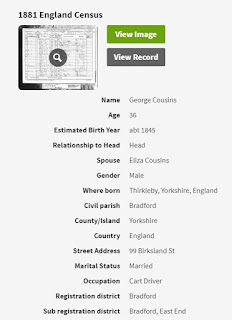Peterborough
An article written by Amy Lackey for Family Tree Forum online magazine july 2008
The cathedral city of Peterborough is situated on the River Nene in the heart of Cambridgeshire, 80 miles north of London. Whilst it is self-governing, it forms part of the county of Cambridgeshire for ceremonial purposes.



The cathedral city of Peterborough is situated on the River Nene in the heart of Cambridgeshire, 80 miles north of London. Whilst it is self-governing, it forms part of the county of Cambridgeshire for ceremonial purposes.
The area is flat and low lying, with the Fens lying to the east of the city. Human settlement in the area dates back to before the Bronze Age (2300-600 BC), and evidence of this can be seen at the Flag Fen Archaeological Site, in the Fengate area of the city.

The city’s railway station is on the East Coast Main Line, which terminates at London in the south and at Edinburgh in the north. It also connects with the stations of the east coast. It was the coming of the railways in the 19th century which led to the rapid increase in the population, which resulted in the market town becoming an industrial centre, particularly in brickmaking, due to the vast supply of local clay deposits. There was further growth in the 1960s, when it was designated as a ‘New Town’.
Peterborough is predominantly a Church of England city, but it does support a wide range of religions. The latest church to be constructed is a £7 million ‘superchurch’, called ‘Kingsgate Community Church’, which can seat up to 1,800 worshippers.
Peterborough Cathedral, which was originally founded as a monastry in AD 655 and rebuilt in its present form in the 12th and 13th centuries, is the burial place of Henry VIII’s first wife Katherine of Aragon who died in 1536, and you can still see her tomb today.

The area is the ‘home’ to many large events throughout the year. These include – BMF (British Motocyclists Federation), Truckfest, the East of England Show and Peterborough CAMRA (The Campaign for Real Ale) Beer Festival, as well as many others.
Peterborough has two bowling alleys, an ice-rink, four theatres, three swimming pools, lots of pubs, clubs and restaurants, parks and countryside (some of which are National Trust). It has four shopping centres round the outskirts of the city, with Queensgate and Rivergate shopping centres in the heart of the city centre.
The Nene Valley Railway runs through the centre of the town and out to Yarwell Station, seven miles away, with a couple of other stops en route, including Wansford, where you can look around the engine sheds, and Ferry Meadows, where the main entrance to Nene Park, a beautiful area of lakes, meadows and woodland, is located. Railworld Museum is situated next to the station at Peterborough.
There are also many historical places to go and see. Many of the buildings in the town centre are full of history. The Becket’s Tearooms and the Tourist Information Centre are located in the cathedral’s grounds.
Peterborough Museum and Art Gallery, which was built in 1816 and housed the city’s first infirmary from 1857 to 1928, is situated a few minutes walk from the bus and train stations.

A three mile drive (or bus trip) west from the city centre is Longthorpe Tower, a 14th century three storey tower and manor house, now in the care of English Heritage. Close by is Thorpe Hall, now a Sue Ryder care home, with spectacular gardens, as well as a tearoom and a shop.
Just outside Peterborough, at Stamford, is Burghley House, a fine Elizabethan stately home. Also in the same direction is Sacrewell Farm, which is a working farm that allows visitors.
Peterborough is a town which has something for everyone, old and young alike, a great place to visit for a day or two. I’m lucky that I was born and grew up here, and still live here today.


Comments
Post a Comment